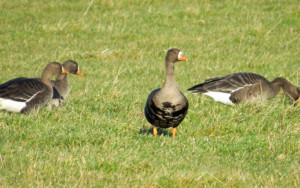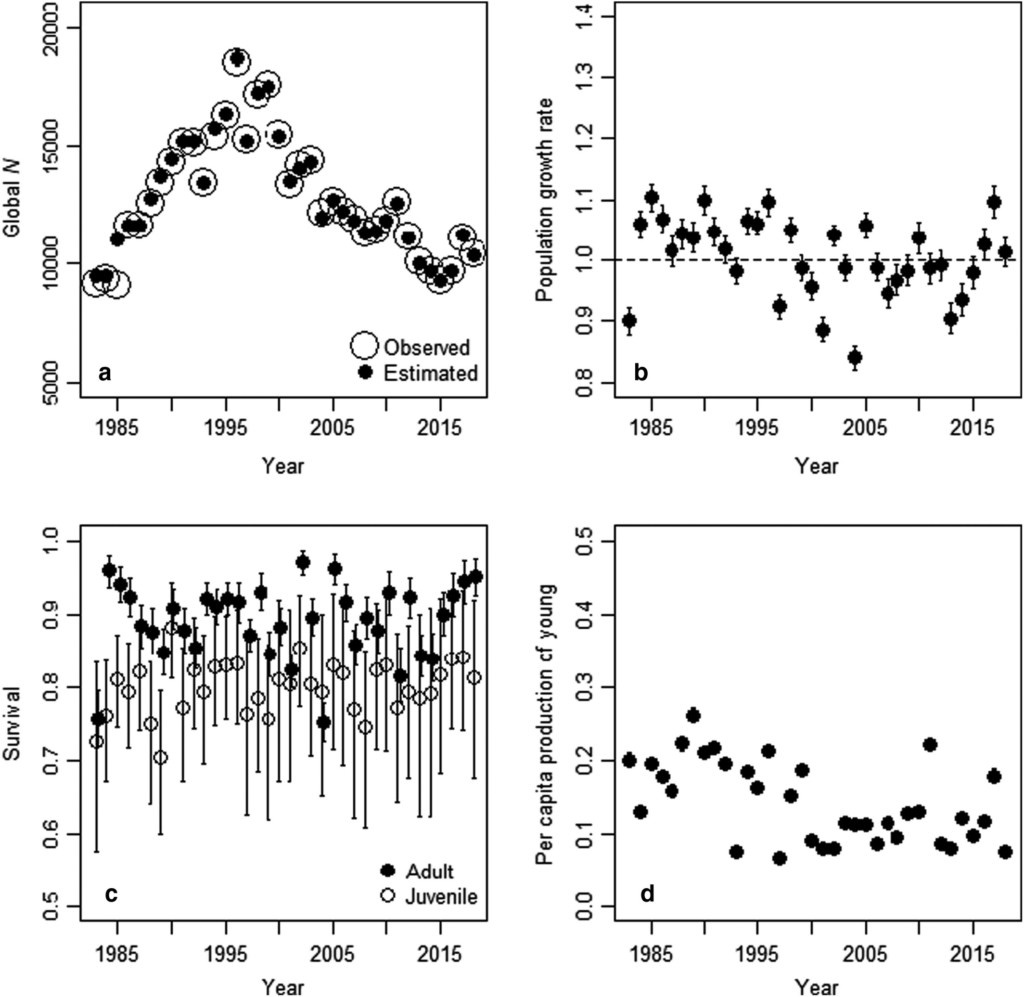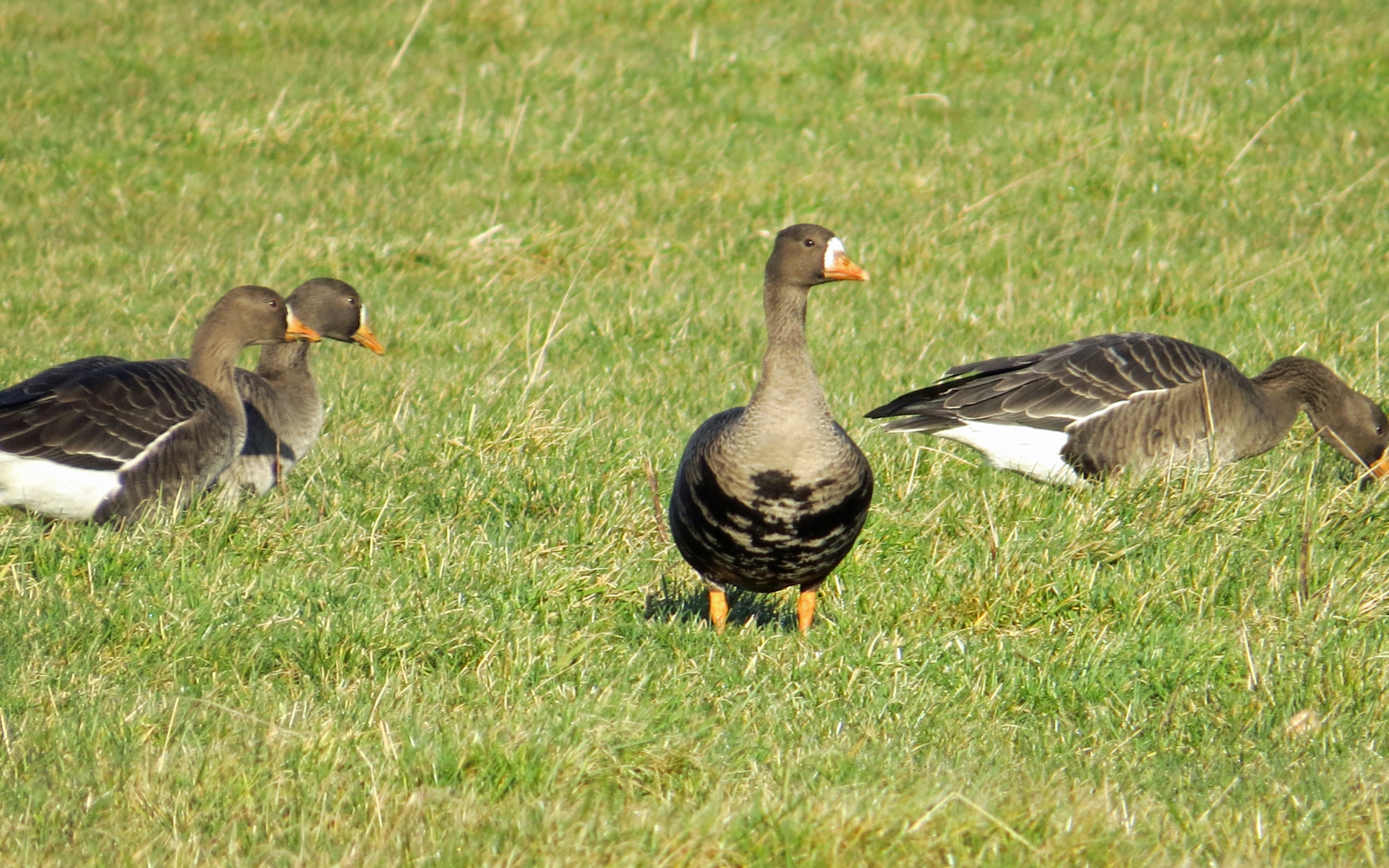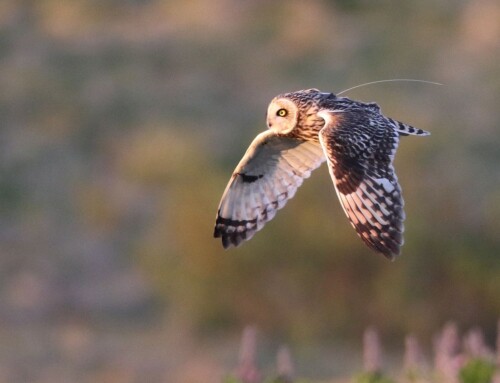
LINKED PAPER
Adult survival and per‐capita production of young explain dynamics of a long‐lived goose population. Weegman, M. D., Walsh, A. J., Ogilvie, M. A., Bearhop, S., Hilton, G. M., Hodgson, D. J., & Fox, A. D. 2022. IBIS. DOI: 10.1111/ibi.13013. VIEW
Life is good if you are a goose. In recent decades, most goose populations in the northern hemisphere have shown a steady increase in numbers. This success is due to multiple factors, such as consistent food availability on agricultural fields, strict hunting regulations and protection of wetlands (Fox et al. 2017). An important exception to this success story concerns the Greenland White-fronted Goose (Anser albifrons flavirostris). While most goose populations were thriving, the Greenland population has continuously declined since 2000 (Stroud et al. 2012). Why is this population of conservation concern?
Population model
To understand the demise of the Greenland White-fronted Goose, Mitch Weegman and his colleagues developed a Bayesian population model (Weegman et al. 2016). Using information from annual spring counts in Great Britain and Ireland and re-sightings of ringed birds, they were able to estimate the survival probability of adults and juveniles. The output of the model confirmed the declining population trend, but also pinpointed the main drivers of this population crash, namely reduced adult survival and decreased production of young. Interestingly, juvenile survival did not significantly impact population dynamics.

Figure 1. The declining population trend in the Greenland White-fronted Goose (top figures) can be explained by variation in adult survival and reduced production of young birds (lower figures).
Extreme weather
Identifying the most important life stages is only the first step in protecting the Greenland White-fronted Goose. Next, we need to figure out why adult survival and reproduction is lowered in these birds. The researchers suspect that harsh weather conditions might be the culprit. Adult geese regularly die during spring or autumn migration when they face extreme weather (Owen & Black 1989). And poor spring conditions, such as heavy snowfall, could lead to reduced breeding success on Greenland (Boyd & Fox 2008). More research is needed to determine which environmental conditions affect adult survival and reproduction throughout the year. New insights will hopefully allow us to reverse the negative population trend and add the Greenland White-fronted Goose to the other goose success stories.
References
Boyd, H. & Fox, A.D. (2008). Effects of climate change on the breeding success of White-fronted Geese Anser albifrons flavirostris in West Greenland. Wildfowl 58: 55– 70. VIEW
Fox, A.D., Elmberg, J., Tombre, I. & Hessel, R. (2017). Agriculture and herbivorous waterfowl: a review of the scientific basis for improved management. Biological Reviews 92: 854– 877. VIEW
Owen, M. & Black, J.M. (1989). Factors affecting the survival of barnacle geese on migration from the breeding grounds. Journal of Animal Ecology 58: 603– 617. VIEW
Weegman, M.D., Bearhop, S., Fox, A.D., Hilton, G.M., Walsh, A.J., McDonald, J.L. & Hodgson, D.J. (2016). Integrated population modelling reveals a perceived source to be a cryptic sink. Journal of Animal Ecology 85: 467– 475. VIEW
Image credits
Top right: Greenland White-fronted Goose (Anser albifrons flavirostris) | MPF | CC BY-SA 3.0 Wikimedia Commons
Blog posts express the views of the individual author(s) and not those of the BOU.
If you want to write about your research in #theBOUblog, then please see here




